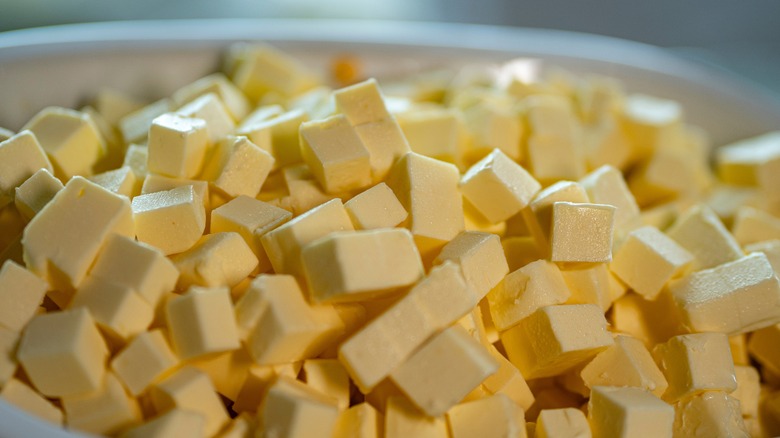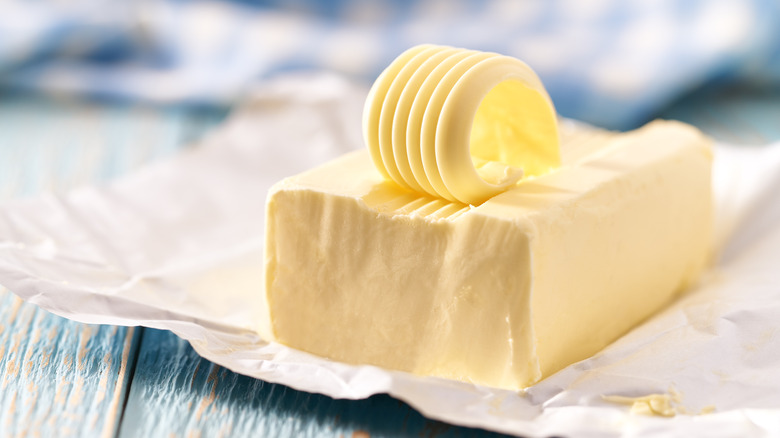How To Tell If Butter Is Salted Or Unsalted With A Simple Texture Check
When it comes to baking or cooking, one of the first steps is often selecting the right type of butter. Whether a recipe calls for a salted or unsalted version can significantly impact the final flavor of your dish. But what if you're faced with a container of butter and can't remember which type it is? While most brands clearly label their packages as either salted or unsalted, a quick glance at the wrapper doesn't always provide the answer you're looking for.
Thankfully, there are clues to help you determine whether it has sodium in it or not. One of the best visual signs is the texture of the butter. Salted varieties tend to have a firmer texture compared to unsalted versions. This is because sodium acts as a preservative within the butter, which can result in a denser and more solid consistency. If you find that your butter is difficult to spread straight from the refrigerator and has a slightly firmer feel to it, chances are it's salted.
Also check for this visual cue when it comes to butter
Another indicator you can quickly spot is the color of the butter. Salted versions typically have a more vibrant yellow hue compared to the creamy white appearance of unsalted kinds. This is due to the presence of beta-carotene, a natural pigment found in grass-fed cow's milk. The color of the butter can vary depending on factors such as the cow's diet and the time of year, but as a general rule, salted varieties tend to have a deeper yellow color.
Ultimately, whether you reach for salted or unsalted butter depends on personal preference and the requirements of your recipe. Salted brands add a subtle savory flavor to dishes and are great for spreading on bread or melting over vegetables. On the other hand, unsalted butter has a lower moisture content and allows you to control the salt content in your cooking and is preferred in recipes where precise measurements are crucial, such as baking.
Next time you're faced with a seemingly unidentifiable container of butter and can't remember which type it is, keep these tips in mind to quickly determine whether it's salted or unsalted. With a little observation and know-how, you'll be able to confidently select the perfect type for your dish.

